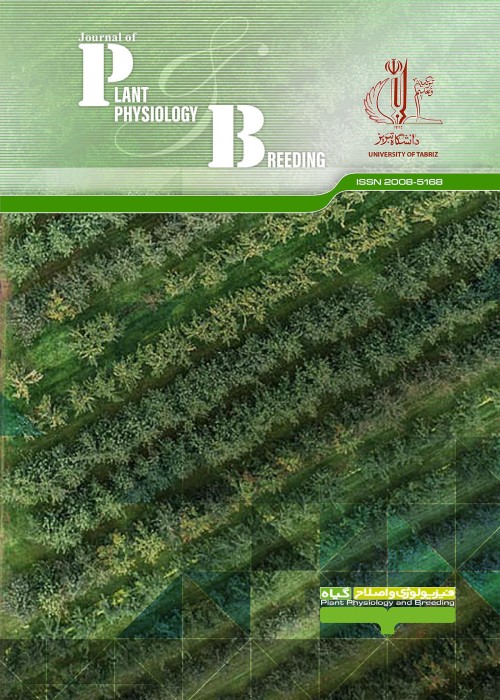Induced genes expression pattern in response to drought stress at seedling stage of wheat
Molecular studies have shown that several genes with various functions are induced by drought stress and various transcription factors are involved in the regulation of the stress-inducible genes. To evaluate the effects of drought stress on gene expression, CRTBF2, DREB6 and DBF transcription factors as well as the expression pattern of Acyl, SuT5 and SuT4 genes were studied using qRT-PCR. The experiment was carried out as factorial based on completely randomized design. One factor included drought stress levels of -1, -2, -4 and -6 bar imposed by polyethylene glycol plus a control. The second factor consisted of four wheat cultivars as follows: Qaboos and Koohdasht (as drought tolerant), and Ehsan and Morvarid (as drought sensitive). Assessing the seedling morphological traits, such as germination percentage, plumule length and radicle length showed that with an increase in drought stress, the tolerant cultivars of Qaboos and Koohdasht showed lower decrease for these traits compared to the sensitive cultivars of Ehsan and Morvarid. The results of evaluating the gene expressions demonstrated that the DREB6 gene expression was higher in the tolerant cultivars of Qaboos and Koohdasht as compared to the sensitive cultivars of Ehsan and Morvarid, indicating the possible role of the product of this gene, as a transcription factor, in inducing promoters of drought tolerance genes and transcribing such genes. However, the CRTBF2 and DBF genes acted as repressor transcription factors in expressing the genes involved in the drought stress tolerance in the cultivars under study. The expressions of the Acyl and SuT5 genes were greater in the tolerant cultivars compared to the sensitive cultivars. The SuT4 gene expression was lower in both tolerant and sensitive cultivars than the expression of this gene in the corresponding control treatment. Therefore, it seems that the Acyl and SuT5 genes, through lipid decomposition and carbohydrate transport pathways, respectively, increased the tolerance of Qaboos and Koohdasht cultivars in this study.
- حق عضویت دریافتی صرف حمایت از نشریات عضو و نگهداری، تکمیل و توسعه مگیران میشود.
- پرداخت حق اشتراک و دانلود مقالات اجازه بازنشر آن در سایر رسانههای چاپی و دیجیتال را به کاربر نمیدهد.


